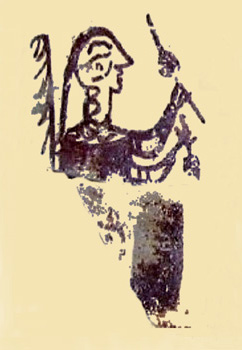Textiles and rituality in the late Tartessian Culture of the Guadiana valley
 Abstract
Abstract
After the downfall of the Guadalquivir’s Tartessian Culture at the end of the 6th century BC, the Tartessian core located along the Middle Guadiana Valley continued its cultural and economic development as a type of hybrid response, having a unique, prosperous period throughout the 5th century BC. The archaeology of this complex society is represented in Tartessic lowland buildings covered by tumuli, like the well-known examples at Cancho Roano (Zalamea de la Serena, Badajoz) and La Mata (Campanario, Badajoz). In the case of the former, remnants from textile activities like spinning and weaving are plentiful, including loom weights, spindle whorls, and metal and bone needles, as well as pins. Textile fibres were not recovered; however, recent finds provide insight into the technical and ritual meanings of textiles in these unique contexts. An example of this are the discoveries at the Casas del Turuñuelo site (Guareña, Badajoz), a newly-excavated building under a tumulus that produced fabrics and textile tools. These new discoveries are presented herein, along with a review of prior finds to bring us new interpretations.
 Downloads
Downloads
Downloads
Pubblicato
Come citare
-
Abstract513
-
PDF 382
Fascicolo
Sezione
Licenza

Este obra está bajo una licencia de Creative Commons Reconocimiento-NoComercial-SinObraDerivada 4.0 Internacional.



